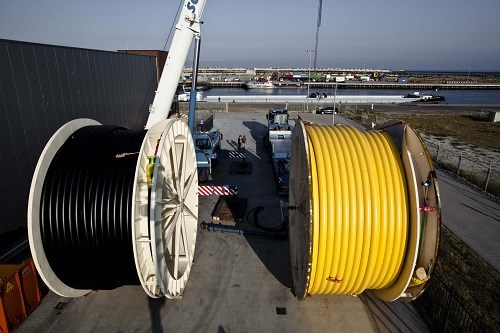Evonik Invests in Thermoplastic Composite Pipelines
New pipelines feature inner plastic pipe covered with a composite of unidirectional tapes which are then sheathed by the plastic--HDPE, PP, nylon 12, and PEEK can be used.

Germany’s Evonik, through its venture capital arm, has invested in Airborne Oil & Gas (AOG) of The Netherlands, so that the specialty chemical group now holds a minority interest in the Dutch company. The investment was made jointly with HPE Growth Capital and Shell Technology Ventures—though the volume of the transaction is not being disclosed. What is key, though, is that the investment was driven by AOG’s unique technology for the production of thermoplastic composite pipes for a variety of offshore oil & gas applications.
AOG’s pipelines consist of three layers: An inner plastic pipe is covered with a composite of unidirectional tapes, which in turn is sheathed by the plastics. Polymers such as HDPE, PP, nylon 12 and PEEK can be used. The unidirectional tapes are thin plastic bands in which continuous reinforcing fibers are embedded in parallel alignment. When a number of such bands are stacked vertically at defined angles and fused together, it results in an extremely stable composite.
AOG is now regarded as an innovation leader in thermoplastic composite pipelines for oil & gas applications. The company’s expertise lies in the design of both the composite material and the finished pipe, for a variety of applications: All the layers are melt-fused to one another inseparably, which explains the reportedly outstanding properties of the pipelines.
The incumbent offshore oil & gas infrastructure consists of either rigid steel pipes, or so-called flexibles—comprised of multiple layers of steel and polymers. AOG’s pipelines dispense with steel entirely and as such are not susceptible to corrosion. They boast extremely high mechanical stability but are also flexible. Additionally, they are lightweight and can be fabricated in lengths of up to 6.2 miles, which means that AOG’s pipes can be installed relatively simply and cost effectively. Rigid steel lines are welded together from segments that are 32-to-65 feet long, using highly specialized, costly pipelaying vessels.
For Evonik, the oil & gas industry is an attractive growth market and an important innovation field. The company is a market leader in nylon 12, with its Vestamid portfolio, which is well-proven in pipes for oil and gas production and transport.
According to AOG, a number of operators already have qualified AOGs thermoplastic composite pipes for offshore oil & gas transport lines, where the benefits of low-cost installation and elimination of corrosion offer game-changing improvements. AOG says that a significant amount of the 93,000 to 124,000 miles of globally installed transport lines is over 20 years old and in need of replacement—placing the company in an attractive entry point in this arena.
Related Content
-
What is the Allowable Moisture Content in Nylons? It Depends (Part 1)
A lot of the nylon that is processed is filled or reinforced, but the data sheets generally don’t account for this, making drying recommendations confusing. Here’s what you need to know.
-
Automotive Awards Highlight ‘Firsts,’ Emerging Technologies
Annual SPE event recognizes sustainability as a major theme.
-
ICIS Launches: Ask ICIS Generative AI Commodities Assistant
Said to be the first of its kind, this AI assistant will enhance access to ICIS’ intelligence and insights for the energy and chemical markets.
















